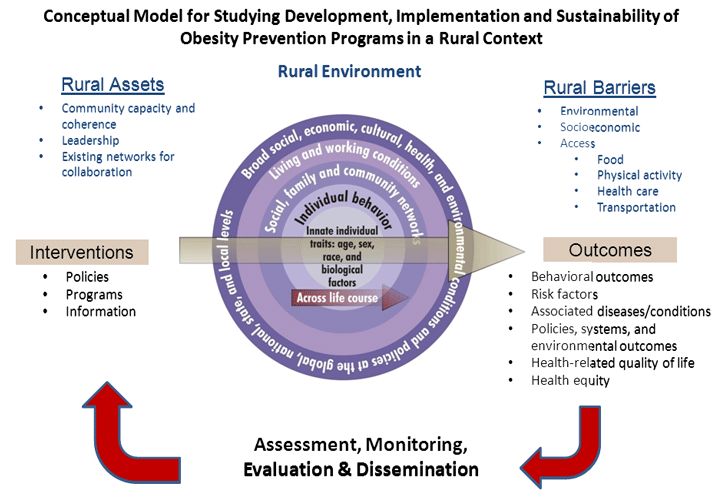Environmental Factors
Social and physical environments shape actions and health-related choices of target audiences. Family relationships, neighborhood characteristics, community networks and institutions, regulations, and policies all play a role. An “ecological approach” to obesity examines how these contexts influence one another and helps map out strategies to address problems at each level.
To prevent obesity, barriers to healthy eating and physical activity must be addressed to make the healthy choice the easy choice. Complementary strategies can shift social norms to support healthy behaviors and help people make healthy choices. These strategies should:
- Increase individual knowledge and skills
- Change organizational practices
- Educate community and healthcare service providers
- Build coalitions and networks
- Foster policy and environmental change
Social-ecological Model
Many factors contribute to overweight and obesity. The social-ecological model describes factors on the
individual, social, community, and societal levels that contribute to poor health outcomes. Figure 3-1 addresses
specific assets and barriers to obesity prevention efforts in a rural context. It shows that rates of overweight
and obesity in the population are shaped by individual and environmental factors as well as ecological contexts
that unfold over the life course.
Figure 3-1: Social-ecological model of obesity prevention in a rural context

